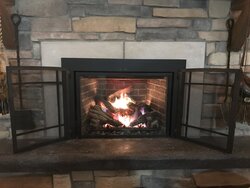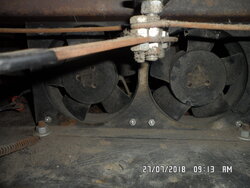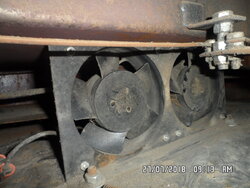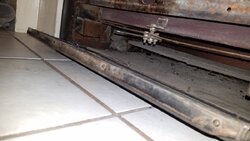New member, but been burning wood for many years. I just purchased a new (to me) home in PA, the northern Pocono's. It was built in 1993, and has what appears to be a built-in Heatilator type fireplace, which I have not been able to ID, as of yet. I have not been able to locate any type of ID plate or serial number so far. It seems small, as far as fireplaces go, and it has an intake vent/grate below the firebox, and about 14" above the firebox, there is an exit vent. There is a blower unit in the space below the fire box. There are two adjustment handles built into the lower vent grate. The one on the left side slides left/right and open and closes two square openings located on either side of the inlet space below the firebox. The 2nd handle, located on the right side of the vent grate, moves in and out, and opens and closes two long narrow vent covers that are located on either side of the area below the firebox. I am including, I hope, a pic of the unit.
The unit measures about 27" wide, and is 24" high and the center of the two arched glass doors. The exit vent above the fireplace measures about 27" wide by 8" high. The blower unit seems to work, but I have not had much luck in getting the fireplace to work without getting a lot of smoke inside the house. Because of the design, I can't see up the flue, and there does not appear to be any type of flue damper. If anyone has any idea as who the manufacturer might be, or where to expand my search, I would appreciate it. There was no paperwork on it in the house, and the original owners were not available to ask about it.
Thanks for any assistance.
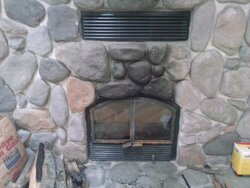
The unit measures about 27" wide, and is 24" high and the center of the two arched glass doors. The exit vent above the fireplace measures about 27" wide by 8" high. The blower unit seems to work, but I have not had much luck in getting the fireplace to work without getting a lot of smoke inside the house. Because of the design, I can't see up the flue, and there does not appear to be any type of flue damper. If anyone has any idea as who the manufacturer might be, or where to expand my search, I would appreciate it. There was no paperwork on it in the house, and the original owners were not available to ask about it.
Thanks for any assistance.

Last edited by a moderator:


